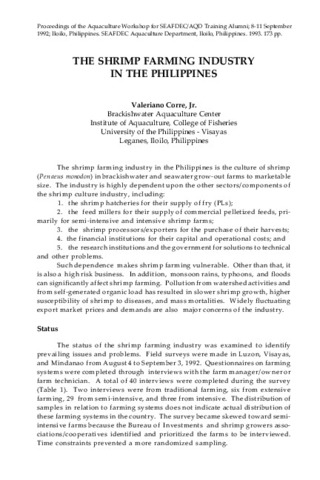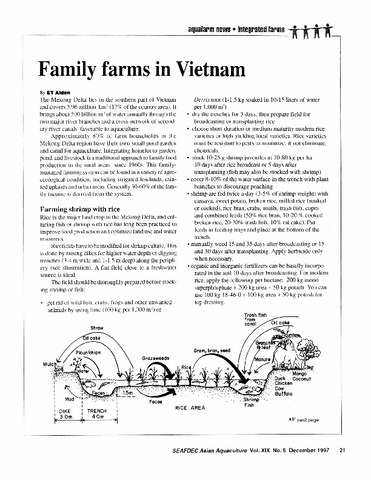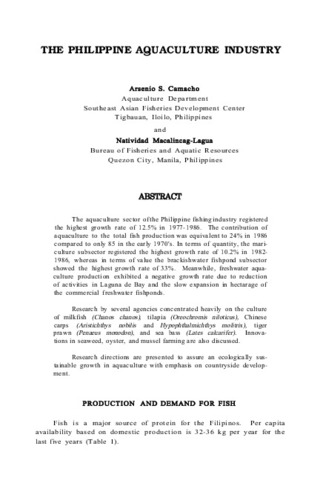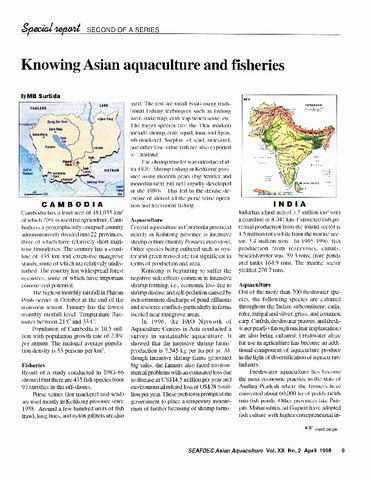The shrimp farming industry in the Philippines
Share
Abstract
The shrimp farming industry in the Philippines is the culture of shrimp (Penaeus monodon) in brackishwater and seawater grow-out farms to marketable size. The industry is highly dependent upon the other sectors/components of the shrimp culture industry, including:
- the shrimp hatcheries for their supply of fry (PLs);
- the feed millers for their supply of commercial pelletized feeds, primarily for semi-intensive and intensive shrimp farms;
- the shrimp processors/exporters for the purchase of their harvests;
- the financial institutions for their capital and operational costs; and
- the research institutions and the government for solutions to technical and other problems.
Suggested Citation
Corre Jr., V. (1993). The shrimp farming industry in the Philippines. In C.T. Villegas, M.T. Castaños, & R.B. Lacierda (Eds.) Proceedings of the Aquaculture Workshop for SEAFDEC/AQD Training Alumni, 8-11 September 1992, Iloilo, Philippines (pp. 88-103). Tigbauan, Iloilo, Philippines: Aquaculture Department, Southeast Asian Fisheries Development Center.
Subject
Taxonomic term
Related items
Showing items related by title, author, creator and subject.
-
Family farms in Vietnam
Aldon, Eva T. (Aquaculture Department, Southeast Asian Fisheries Development Center, 1997) -
The Philippine aquaculture industry
Camacho, Arsenio S.; Macalincag-Lagua, Natividad (Aquaculture Department, Southeast Asian Fisheries Development Center, 1988)The aquaculture sector of the Philippine fishing industry registered the highest growth rate of 12.5% in 1977-1986. The contribution of aquaculture to the total fish production was equivalent to 24% in 1986 compared to ... -
Knowing Asian aquaculture and fisheries
Surtida, Marilyn B. (Aquaculture Department, Southeast Asian Fisheries Development Center, 1998-04)This article is the second of four parts.






